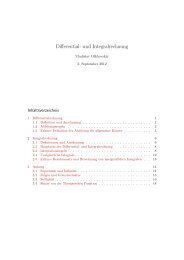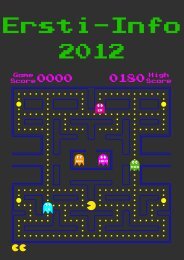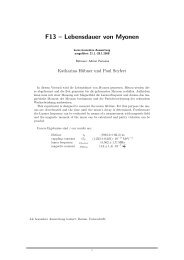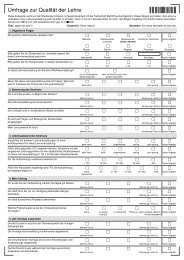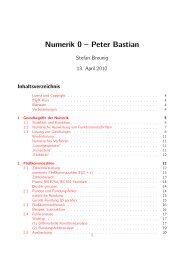Extrasolar Moons as Gravitational Microlenses Christine Liebig
Extrasolar Moons as Gravitational Microlenses Christine Liebig
Extrasolar Moons as Gravitational Microlenses Christine Liebig
You also want an ePaper? Increase the reach of your titles
YUMPU automatically turns print PDFs into web optimized ePapers that Google loves.
Chapter 2<br />
<strong>Gravitational</strong> Lensing<br />
The phenomenon of gravitational lensing occurs when light rays of a background<br />
source are deflected by an intervening m<strong>as</strong>sive body. The light of the source appears<br />
magnified, if more light rays are deflected towards the observing point, than without<br />
the lens. Accordingly, the light can also be demagnified, if light rays are deflected<br />
away from the observer.<br />
This chapter aims at providing the reader with a short introduction to the history<br />
(section 2.1), the b<strong>as</strong>ic equations (section 2.2) and the application to planet searches<br />
(section 2.3) of gravitational lensing. Better and more comprehensive reviews are<br />
plentiful in literature, e.g. Meylan et al. (2006).<br />
2.1 Historical Development<br />
The deflection of light by m<strong>as</strong>sive bodies must be concluded from Einstein’s general<br />
theory of relativity, which w<strong>as</strong> first summarised in 1916 (Einstein, 1916). In this<br />
work Einstein first published the correct derivation of the deflection angle of a light<br />
ray p<strong>as</strong>sing the sun close to the surface. He had thought “ Über den Einfluß der<br />
Schwerkraft auf die Ausbreitung des Lichtes” 1 before, such w<strong>as</strong> the title of a paper<br />
published in the “Annalen der Physik” (Einstein, 1911), where he also references an<br />
earlier publication (Einstein, 1908). Even this is preceded by more than a century<br />
in form of a paper by Soldner (1801), who applied Newtonian gravity to compute a<br />
deflection angle of 0.84 arcsec for the sun, half of the correct value.<br />
Einstein had called for a test of his calculations in 19112 and, indeed, an expedition<br />
set out to me<strong>as</strong>ure precise star positions close to the limb of the sun during solar<br />
eclipse in 1914, but w<strong>as</strong> hindered in their t<strong>as</strong>k by the outbreak of World War I. This<br />
w<strong>as</strong> very fortunate for Einstein, <strong>as</strong> it gave him time to develop general relativity<br />
1 “About the influence of gravity on the propagation of light”<br />
2 “Es wäre dringend zu wünschen, daß sich Astronomen der hier aufgerollten Frage annähmen,<br />
auch wenn die im vorigen gegebenen Überlegungen ungenügend fundiert oder gar abenteuerlich<br />
erscheinen sollten. Denn abgesehen von jeder Theorie muß man sich fragen, ob mit den heutigen<br />
Mitteln ein Einfluß der Gravitationsfelder auf die Ausbreitung des Lichtes sich konstantieren<br />
laesst.”<br />
7



